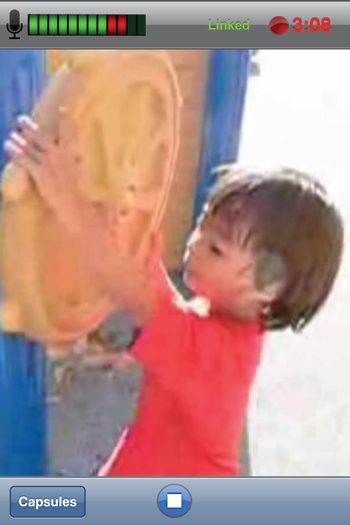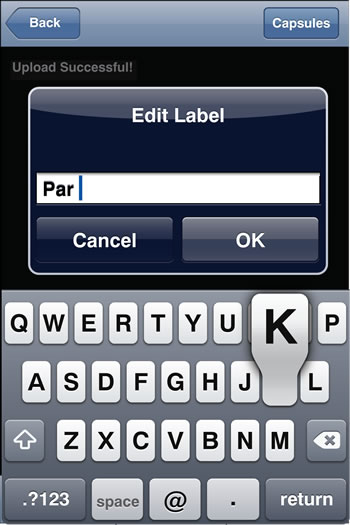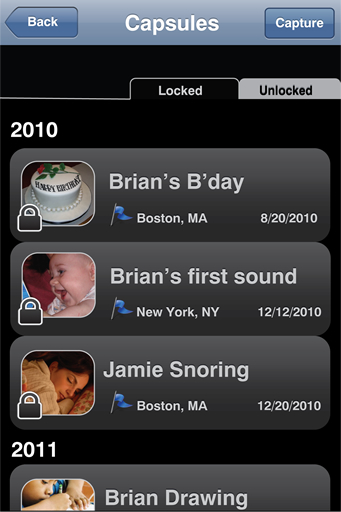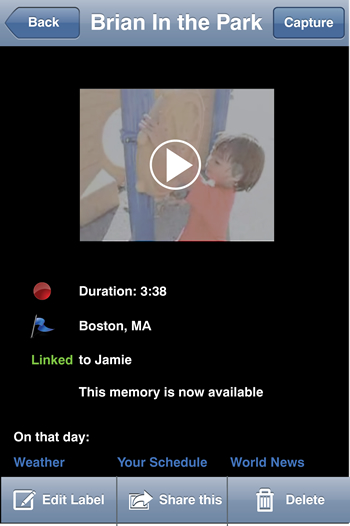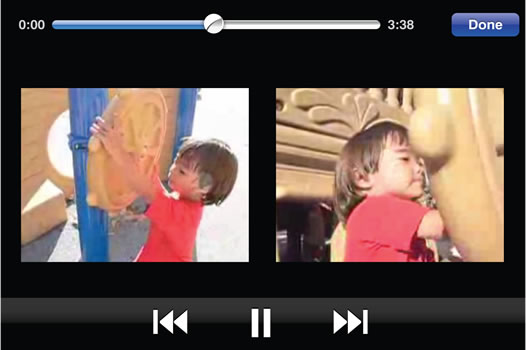 Summary
Summary Research Research |
 Scenario Scenario |
 Design Design |
 Solution Solution |
Time Capsule [M]
|
Sketches 01
|
|
Wireframes 02
|
|
Refinement 03
|
|
Icons 04
|
Design |
03 Refinement |
Based on the wireframes, a high fidelity mock-up of the screens was created to help the team understand how the user would use TCM in the final form.
Home Screen
TCM application icon
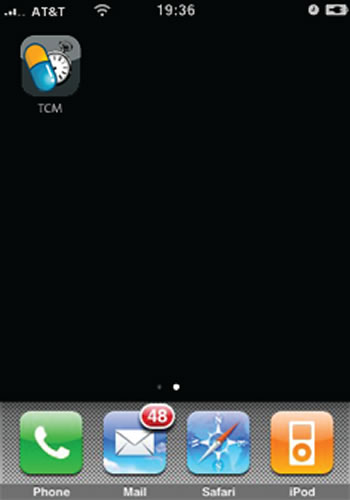
Capture Mode
Once the TCM application is opened, it immediately begins in capture mode to start recording.
This will allow the user to quickly record without missing a moment.
Upload Successful
When the user stops recording, TCM will automatically upload the memory and display
a breakdown of the quality of the recording to ensure the user has an excellent
capture.
If for some reason there are some below quality aspects, the user can either still keep
the memory or delete it.
At this time, the user is required to set a time range to freeze the memory in
TCM.
A design decision was made to force the user to freeze the memory for at least
one month to perserve the essence of TCM, which is to create a feeling of antcipation and surprise for the released memory when the user has long forgotten about the captured memory.
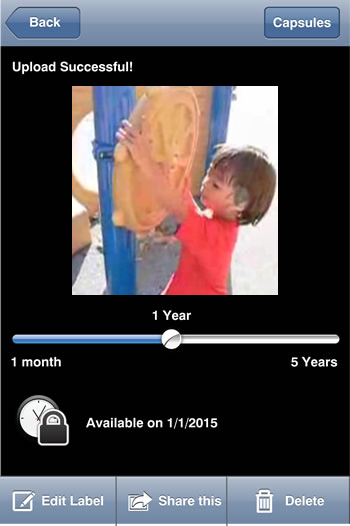
Personalize
User can add a label to each memory to personalize it.
Entire Capsule Repository
After the recording is finished and a label is set, TCM takes the user to all of their memory
capsules organized by the most recent year arranged in two categories - locked and unlocked.
Release of Locked Memory
Once the memory is released, the memory will display fundamental information about the
time of the recording such as duration, location, and link status.
In addition, TCM will pull in feeds from external sources to help portray what happened on
that exact date. This can be
weather, news, and other personal information.
Play Mode
The user can play the memory on their iPhone. If the memory was recorded in Linked Mode,
TCM is able to analyze the videos and interlace the memories so that the user is able to view both recordings of the same memory at the same time giving the experience of amazing multi-dimensional views.
